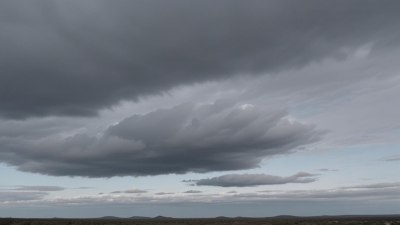How the Color of Rain Clouds Predicts What Kind of Storm Is Coming
Discover how the color of rain clouds can indicate the type of storm approaching and what it means for the weather.

Image by Mateus-Andre on Freepik
The atmosphere is filled with various forms of moisture and air particles that can dramatically influence weather patterns. One of the most fascinating aspects of meteorology involves understanding how the color of rain clouds can predict impending storms. Many individuals often look upwards at the sky, noticing the different hues of clouds, but few understand the complex interplay between cloud coloration and types of storms. This knowledge can aid in predicting what weather changes to expect.
The Basics of Cloud Formation
To grasp the significance of cloud colors in forecasting storms, it is essential to first understand how clouds form. Clouds are created when water vapor in the atmosphere cools and condenses into tiny water droplets or ice crystals. The specific type of cloud that forms is determined by factors such as altitude, temperature, and humidity.
All clouds affect the way sunlight interacts with the Earth's surface. They can scatter, reflect, or absorb different wavelengths of light, which contributes to their appearance. The various types of clouds, such as cumulus, stratus, and cumulonimbus, all play crucial roles in weather development, especially during storm events.
Understanding Cloud Colors
The color of clouds is primarily influenced by two factors: the thickness of the cloud and the position of the sun in relation to the observer. Thin clouds may appear white because they allow sunlight to pass through them. However, as clouds thicken or become saturated with moisture, they can take on darker shades, such as gray or even black.
The color change signifies the cloud’s density and its potential to produce precipitation. For instance, cumulonimbus clouds, often associated with thunderstorms, display dark gray or nearly black hues, indicating their capability to produce severe weather conditions, including heavy rain, hail, and lightning.
Gray Clouds and Rain
Gray clouds are often a precursor to rain. When you see dark, gray clouds gathering in the sky, it is a sign that those clouds are hefty with moisture. This ominous coloration often means that rain is imminent or already falling in nearby areas. The density of these clouds can reduce the sunlight reaching Earth, creating a diffuse gray light even during the day.
Typically, gray rain clouds are stratus or nimbostratus clouds that blanket the sky. They can produce steady, continuous rain, rather than the sudden downpour that is characteristic of more volatile storm systems. It is also essential to consider the temperature; if the air is warm enough, gray clouds may bring light rain, whereas, in colder conditions, they may result in sleet or snow.
Black Clouds and Severe Thunderstorms
Black clouds are particularly alarming, indicating a severe weather event could be on the horizon. Cumulonimbus clouds, a towering type of cloud associated with thunderstorms, often appear nearly black when looked at from below. This dark appearance is due to their immense height and dense moisture content.
When these clouds are spotted, one can expect strong winds, heavy rainfall, possible hail, and even a thunderstorm. The high vertical development of cumulonimbus clouds can lead to the formation of supercells, where rotating updrafts create tornadoes. Therefore, the sight of black clouds should prompt one to seek shelter and prepare for severe weather.
The Role of Atmospheric Conditions
Beyond just the color of clouds, understanding the atmospheric conditions contributing to storm development is crucial. Factors such as temperature inversions, humidity levels, and wind patterns play a significant role in cloud formation and subsequent storm characteristics.
When warm moist air rises into the cooler upper atmosphere, it can lead to the development of towering storm clouds. If this warm air is obstructed by cold fronts, it may create conditions for severe storms. In such scenarios, forecasters will often highlight the likelihood of thunderstorms based on these atmospheric indicators coupled with cloud appearances.
Cloud Types and Specific Storms
Different cloud types correlate with specific types of storms. For example, stratocumulus clouds are often found in stable weather patterns and may produce light drizzle. Cumulus clouds are more promising for fair weather but can evolve into cumulonimbus clouds under the right conditions, turning into aggressive thunderstorms.
When weather systems collide, the resulting clouds can lead to various storm types. For instance, when a cold front meets a warm front and adequately cool air is present, it might produce thunderstorms characterized by varying cloud colors ranging from white to dark gray as the storm intensifies.
Predicting Storm Severity with Cloud Colors
In conclusion, while the color of rain clouds is an important visual cue, it is one of many indicators meteorologists use to predict storm severity. Understanding the types of clouds present and their associated colors can help individuals prepare for impending weather changes. By recognizing the relationship between cloud color and storm type, observers can be better equipped to respond when the sky turns dark.
Whether it’s a light rain shower indicated by soft gray clouds or the impenetrable darkness signaling a severe thunderstorm, the nuances of cloud coloration provide vital information about the upcoming weather. Keeping an eye towards the horizon and learning about atmospheric signs can make all the difference in weather readiness.











